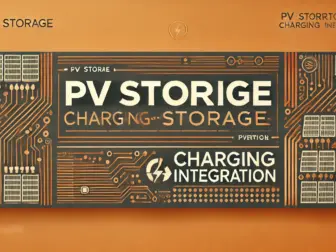Tag - Solar-storage-charging integration
Solar-Storage-Charging Integration: Maximizing Energy Efficiency and Sustainability
In today’s world where climate change and environmental sustainability are at the forefront of discussions, the integration of solar, storage, and charging technologies has become increasingly important. By combining these three elements, it is possible to maximize energy efficiency, reduce carbon emissions, and create a more sustainable energy system.
Solar energy is a clean and renewable source of power that has been gaining popularity in recent years. By installing solar panels on rooftops or in open fields, individuals and businesses can generate their own electricity and reduce their reliance on fossil fuels. However, one of the main challenges of solar energy is its intermittent nature – the sun doesn’t shine 24/7, and energy production is dependent on weather conditions. This is where energy storage comes in.
Energy storage systems, such as batteries, allow excess solar energy to be stored for later use when the sun is not shining. This helps to ensure a more consistent and reliable power supply, even during cloudy days or at night. By storing energy when it is abundant and using it when needed, energy storage systems can reduce the reliance on the grid and help to lower electricity bills.
Charging technologies, such as electric vehicle (EV) chargers, can also be integrated into the solar-storage system to further enhance energy efficiency. By using solar energy to power EV chargers, owners of electric vehicles can reduce their carbon footprint even further. This can help to promote the adoption of electric vehicles and reduce greenhouse gas emissions from the transportation sector.
Overall, the integration of solar, storage, and charging technologies offers a range of benefits, including:
1. Energy independence: By generating and storing their own electricity, individuals and businesses can reduce their reliance on the grid and have more control over their energy supply.
2. Cost savings: By using solar energy and energy storage, users can reduce their electricity bills and potentially earn money by selling excess energy back to the grid.
3. Environmental sustainability: Solar energy is clean and renewable, and using it to power electric vehicles can help to reduce greenhouse gas emissions and combat climate change.
4. Grid stability: By reducing peak demand on the grid and using stored energy during times of high demand, solar-storage systems can help to stabilize the grid and reduce the risk of blackouts.
As the technology continues to improve and costs continue to decline, the integration of solar, storage, and charging technologies is becoming increasingly feasible for a wide range of applications. Whether it’s a residential rooftop solar system with a battery backup, a commercial-scale solar farm with EV charging stations, or a utility-scale solar-storage project, the possibilities are endless. By embracing this integrated approach, we can create a more sustainable and resilient energy system for the future.
